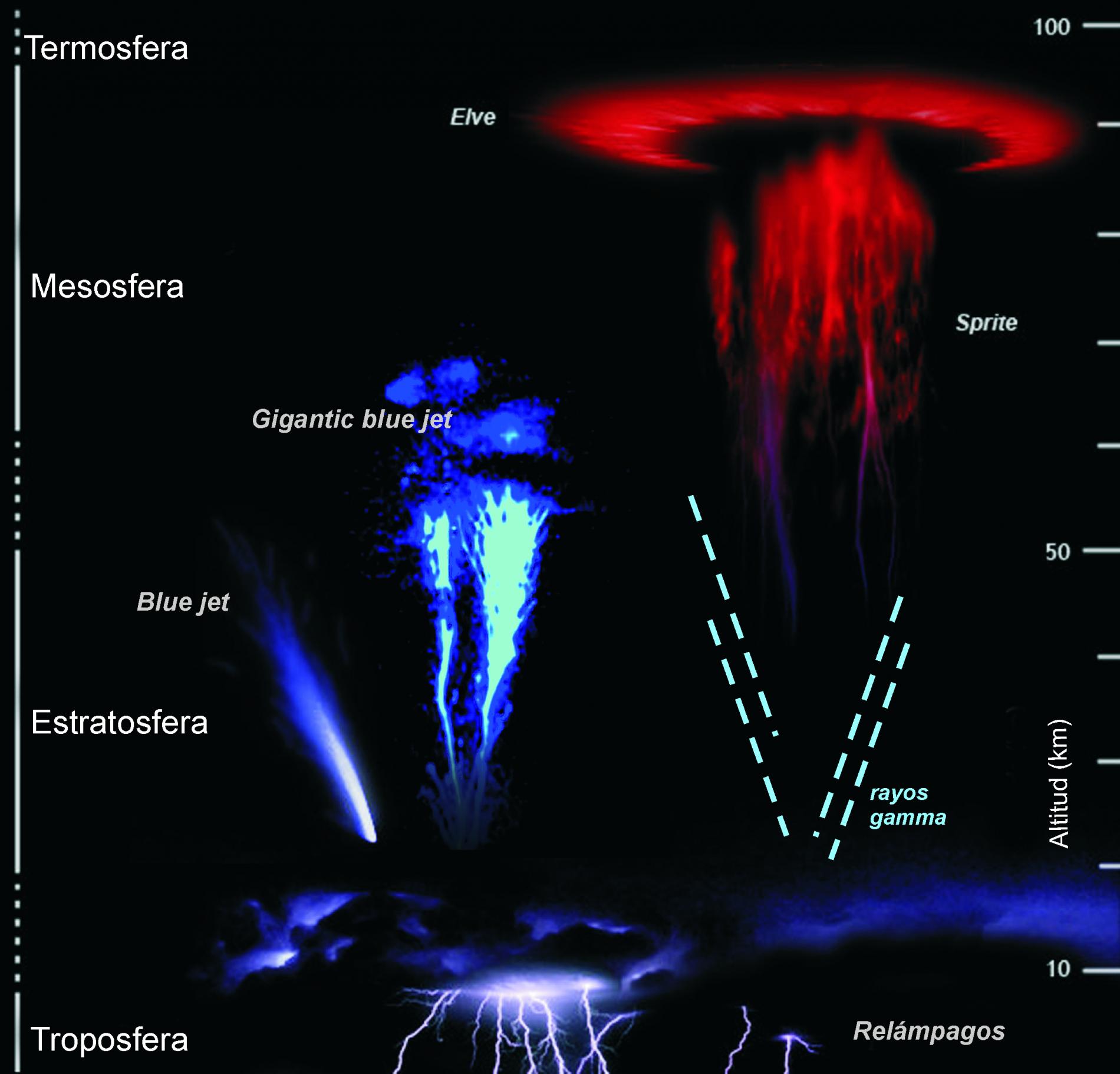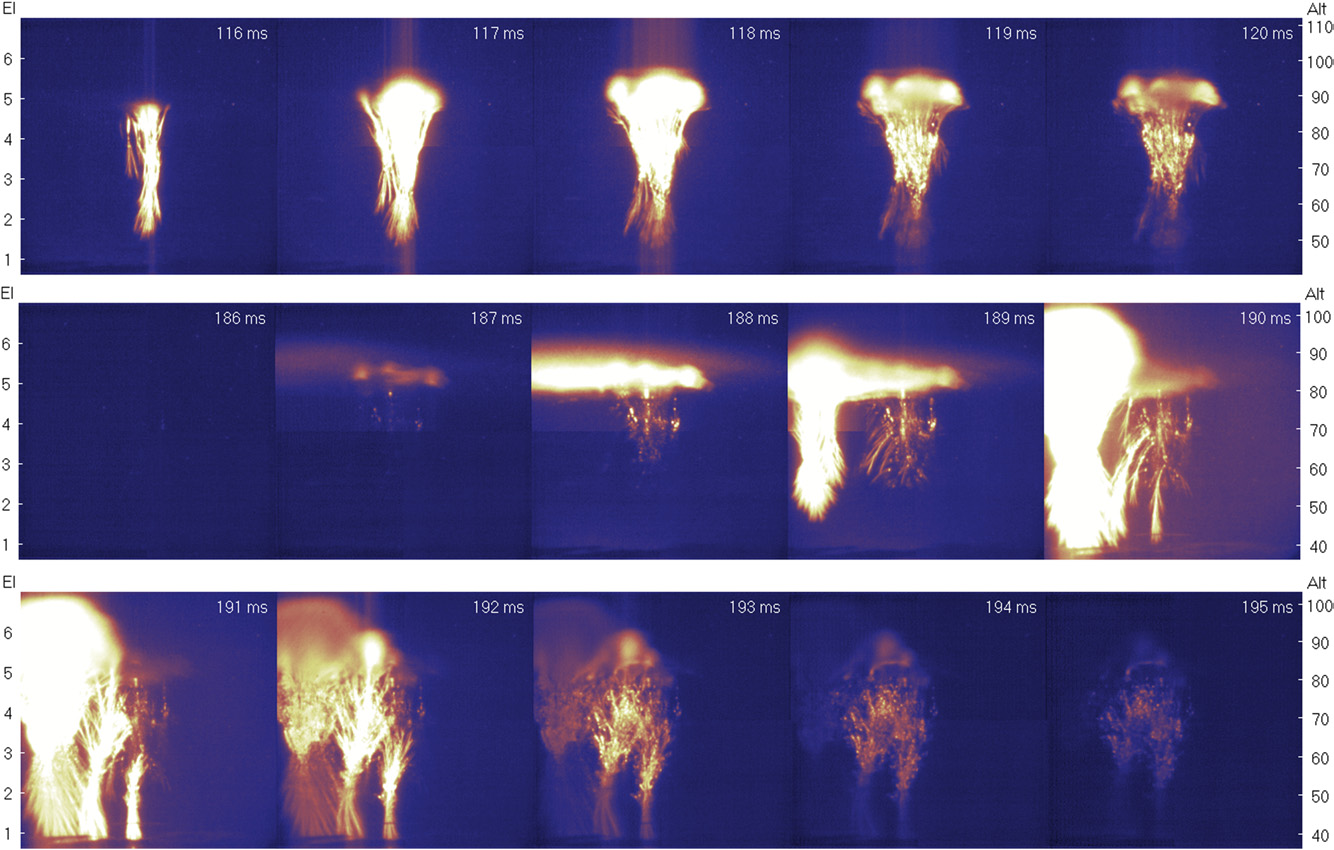SpaceX Launches ASIM mission (ESA), to study electric discharges in the upper atmosphere from the International Space Station
The launch of the mission took place yesterday, April 2 at 22:30 from the Kennedy Space Center in Florida (USA). The Institute of Astrophysics of Andalusia (IAA-CSIC) participates in the analysis of mission data and through ground support with its own instruments
ASIM mission (Atmosphere-Space Interactions Monitor, ESA) will be installed in the Columbus module of the International Space Station to study Transient Luminous Events (TLEs) and terrestrial gamma rays (TGFs), a series of electrical events related to storm lightning but located tens of kilometers above the clouds. These powerful electrical phenomena can influence how our atmosphere protects us from space radiation or atmospheric chemistry, but its causes and consequences are not yet fully known.
"The detection, three decades ago, of intense flashes in the mesosphere, a region of the atmosphere located from fifty kilometers above the ground, was a surprise because it was believed that the mesosphere lacked activity," says Francisco Gordillo, researcher of the Institute of Astrophysics of Andalusia (IAA-CSIC) participating in ASIM-. The influence of these flashes, the TLEs, on the chemical and electrical properties of the upper atmosphere is currently the object of research carried out by groups from all over the world, and ASIM is the first specific space mission to study them."

The TLEs are caused by the large electric fields that form over the clouds of an electrical storm, and there are different types, such as sprites, that last hundredths of a second and show a diffuse upper part and a lower region populated by "tentacles" (filaments of ionized air between ten and one hundred meters thick), or the blue jets, electrical discharges that ascend from the troposphere to the ionosphere.
Likewise, the discovery, in 1994, of gamma rays originating in the upper layers of storm clouds - the TGFs - was an unexpected finding, since until that moment it was thought that gamma radiation only came from outer space. The mechanism that produces the TGFs in the Earth's atmosphere is still unknown today, as well as the exact location of the atmosphere where they are produced.
"The mesosphere, too thin to hold a probe balloon and too thick to keep a satellite in orbit, has received very little scientific attention, in fact, some scientists know as ignorosphere", says Alejandro Luque (IAA-CSIC), which also participates in ASIM. Each of these luminous phenomena reveals information that helps to understand the electrical and chemical activity of the region and allows us to complete our knowledge of the global electric circuit of the planet.
ASIM, which lasts two years, extendable to four or more, has different modules composed of cameras and sensors that will scan atmospheric layers higher than storms and register these phenomena from a privileged position.

SPANISH PARTICIPATION
Spain has invested almost twelve million euros in ASIM, and several Spanish institutions are part of the scientific consortium of the mission, among which is the Institute of Astrophysics of Andalusia (IAA-CSIC), the University of Valencia (UV), the Rey Juan Carlos University (URJC) and the Polytechnic University of Catalonia (UPC). In addition, the University of Valencia and INTA are technological members of the consortium.
In the Institute of Astrophysics of Andalusia (IAA-CSIC) the participation in ASIM is carried out from the Transient Plasma in Planetary Atmospheres group (TRAPPA), which will work in data analysis and is developing computational models to understand electrical activity in the terrestrial atmosphere from the troposphere (rays) to the high atmosphere, from eighteen to ninety kilometers (region in which the TLEs are produced).
In addition, the IAA has developed two instruments for obtaining data that will complete the observations of ASIM: the GRASSP instrument (GRAnada Sprite Spectrograph and Polarimeter) is the first spectrometer designed for the exclusive study of atmospheric electricity phenomena in the upper layers of the atmosphere. Operational since 2015 in the Ebro valley, one of the regions in Europe with the most atmospheric electrical activity, it has the best spectral resolution ever achieved to analyze transient optical spectra (in millisecond scales).
And GALIUS (GrAnada LIghtning Ultrafast Spectrograph), also designed, developed and built entirely in the IAA, is the world's fastest lightning spectrometer: it achieves recording speeds of more than two million images per second, which means access time scales below 0.5 microseconds. "This will give us access to the different temporal phases of the rays, which will allow fundamental studies on the dynamics of lightning or chemical processes induced by lightning in the atmosphere," concludes Francisco Gordillo (IAA-CSIC).
The TRAPPA group of the IAA has significant European funding under the H2020 framework for fundamental research in atmospheric electricity addressed from a computational perspective, through the Elightning (ERC-Consolidator Grant) and SAINT (Science and Innovation in Thunderstorms) projects.
Instituto de Astrofísica de Andalucía (IAA-CSIC)
Unidad de Divulgación y Comunicación
Silbia López de Lacalle - sll[arroba]iaa.es - 958230532
http://www.iaa.es
http://www-divulgacion.iaa.es

